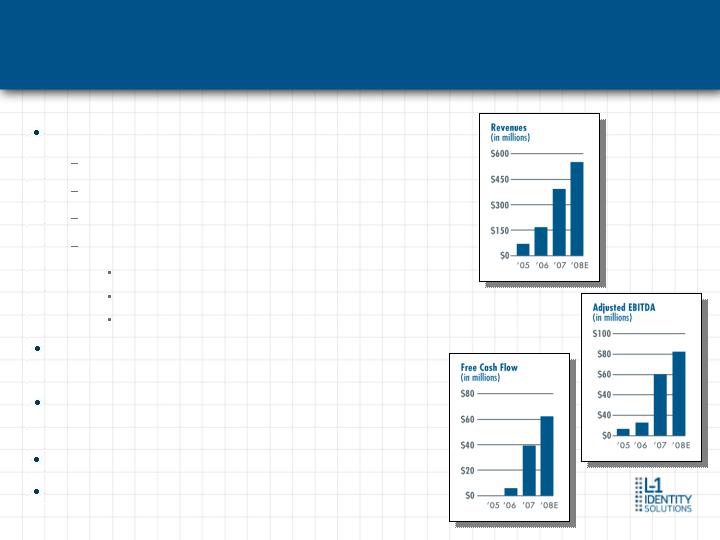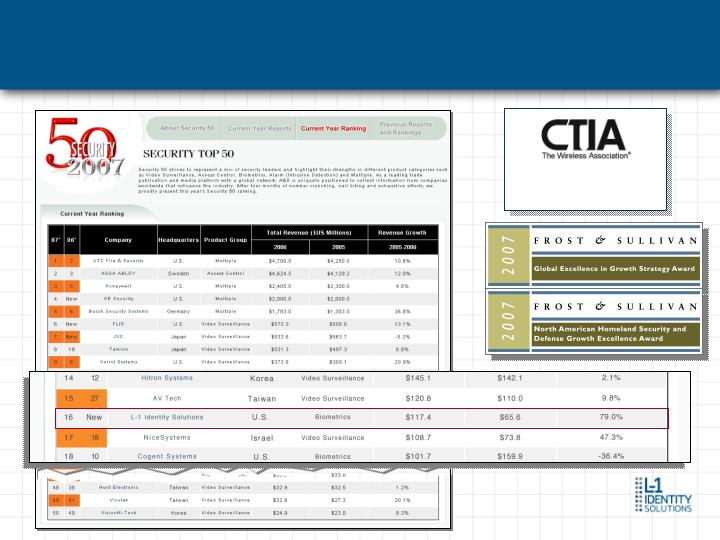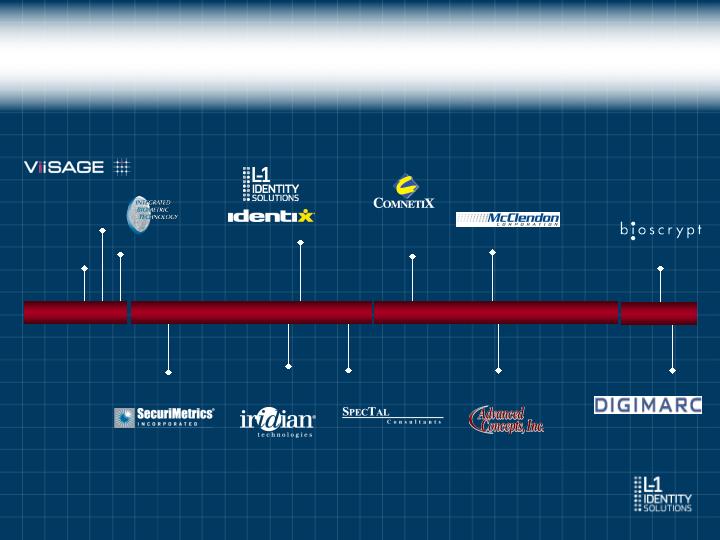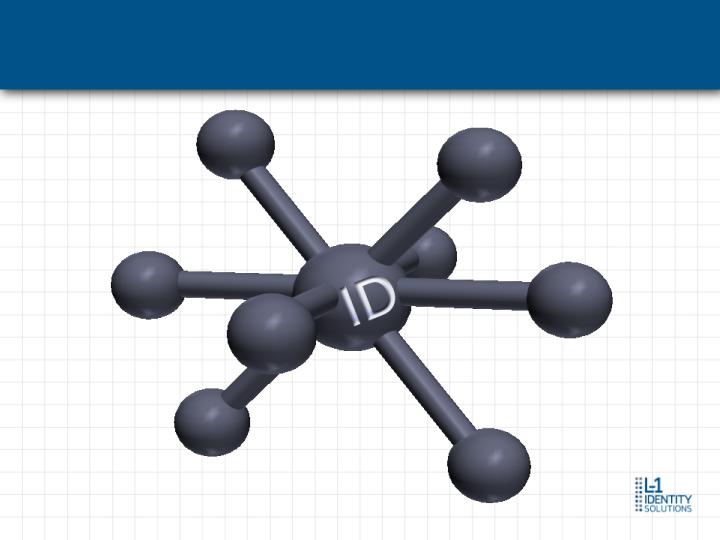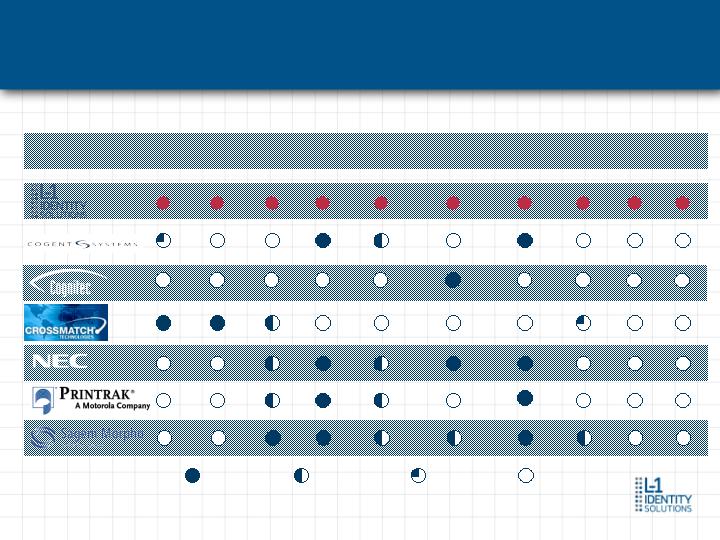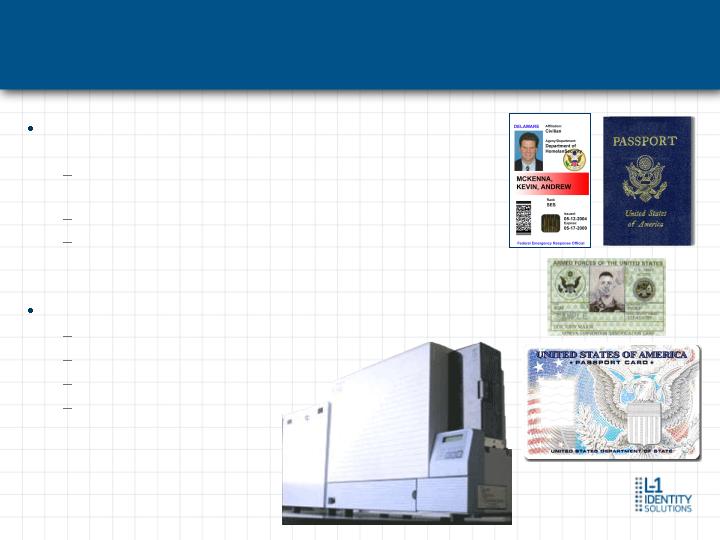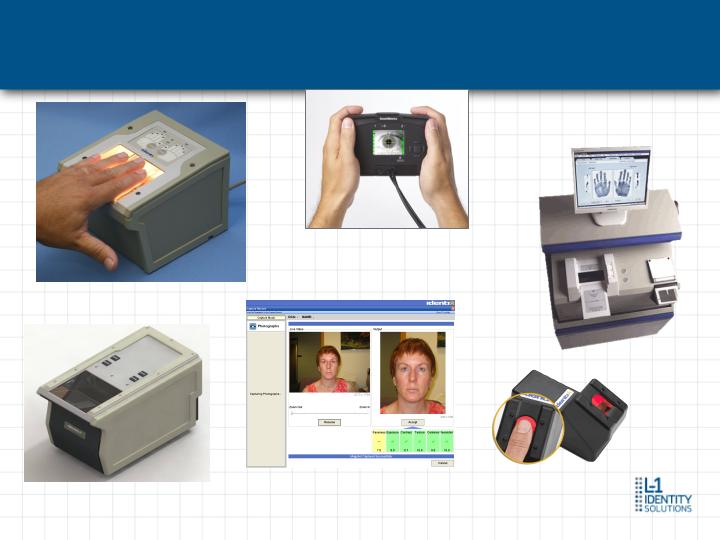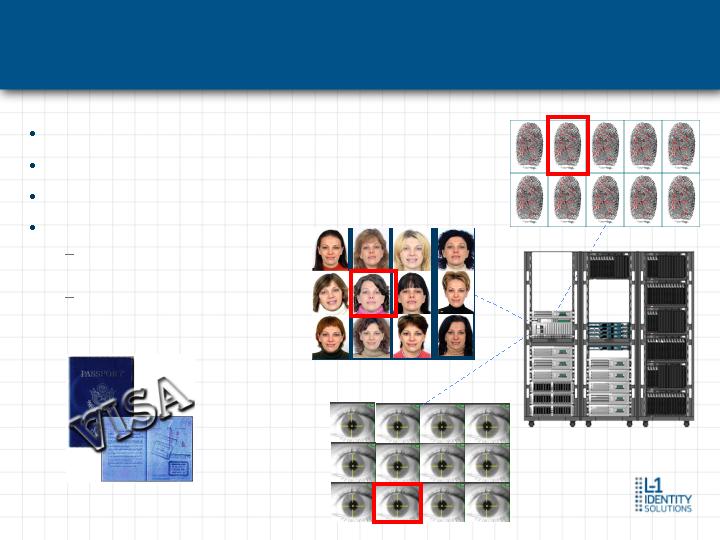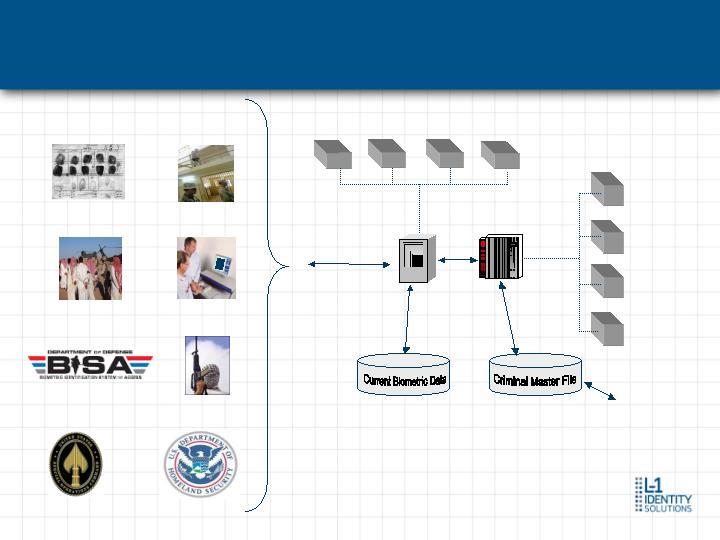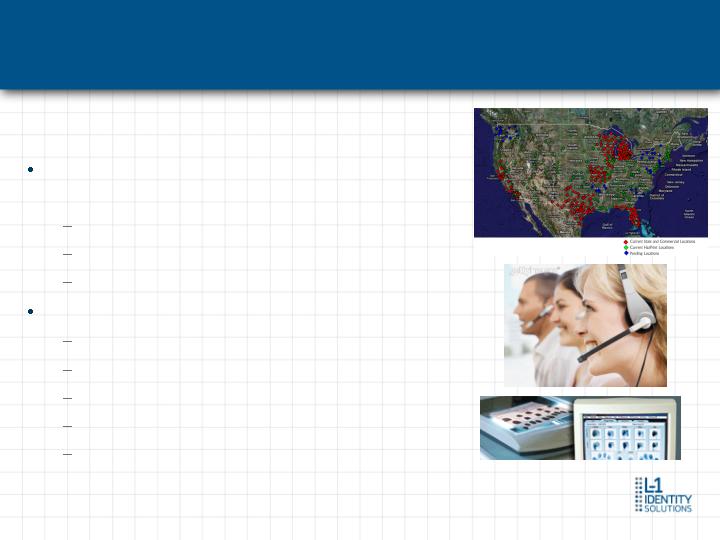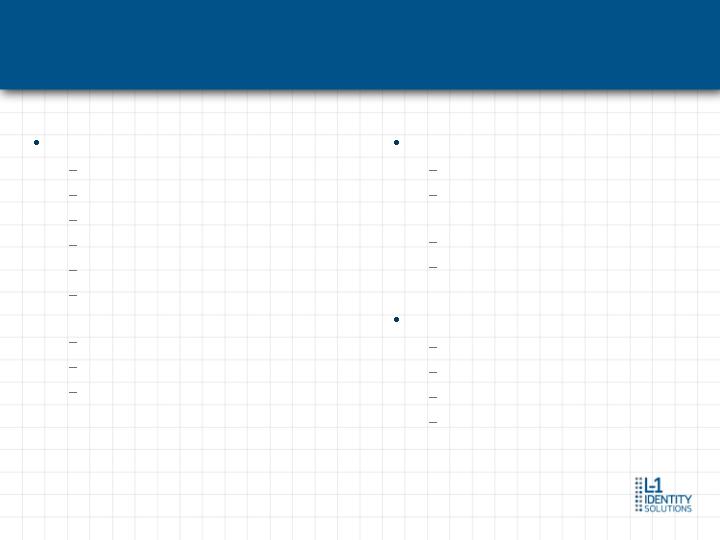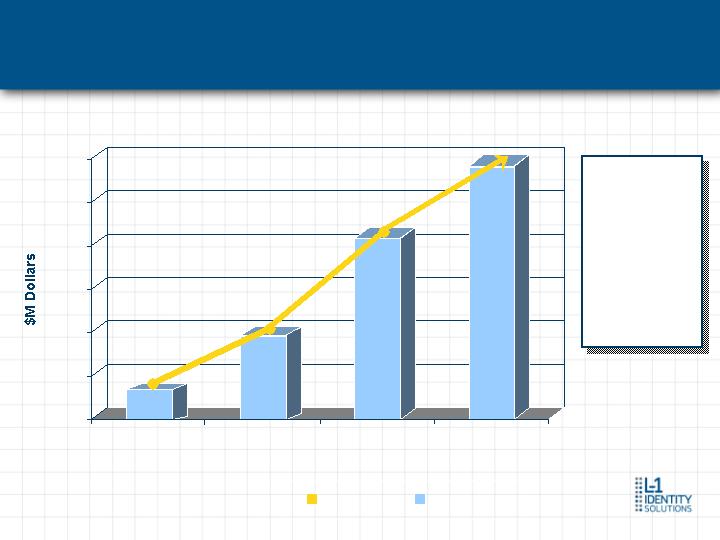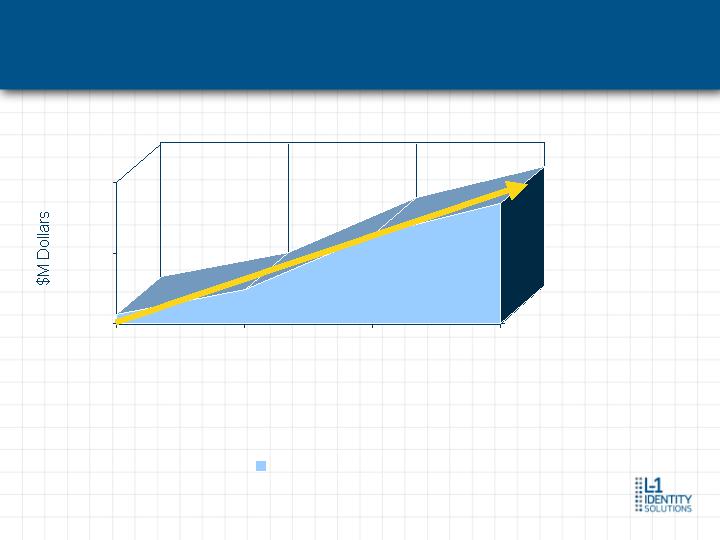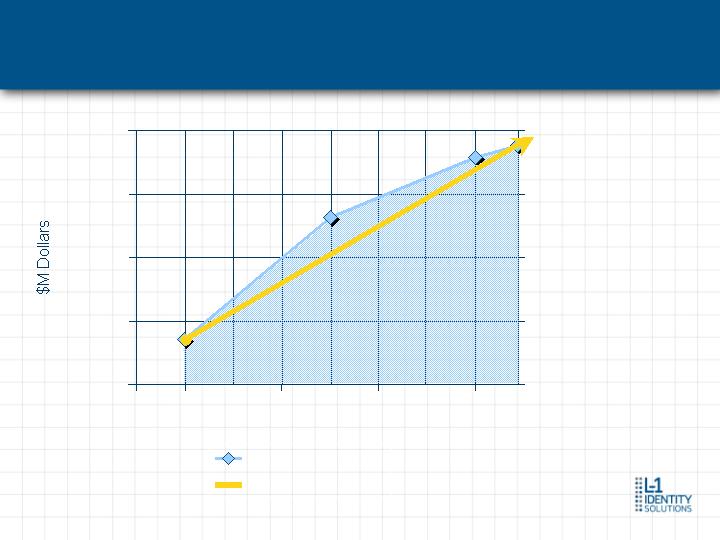
Defined Financial Terms
Adjusted EBITDA
L-1 Identity Solutions uses Adjusted EBITDA as a non-GAAP financial performance measurement. Adjusted EBITDA is calculated by adding
back to net income (loss) interest, income taxes, depreciation, amortization, and stock-based compensation expense. Adjusted EBITDA is
provided to investors to supplement the results of operations reported in accordance with GAAP. Management believes Adjusted EBITDA is
useful to help investors analyze the operating trends of the business before and after the adoption of SFAS 123(R) and to assess the
relative underlying performance of businesses with different capital and tax structures. Management believes that Adjusted EBITDA
provides an additional tool for investors to use in comparing L-1 Identity Solutions financial results with other companies in the industry,
many of which also use Adjusted EBITDA in their communications to investors. By excluding non-cash charges such as amortization,
depreciation and stock-based compensation, as well as non-operating charges for interest and income taxes, L-1 Identity Solutions can
evaluate its operations and can compare its results on a more consistent basis to the results of other companies in the industry.
Management also uses Adjusted EBITDA to evaluate potential acquisitions, establish internal budgets and goals, and evaluate
performance.
L-1 Identity Solutions considers Adjusted EBITDA to be an important indicator of the Company's operational strength and performance of
its business and a useful measure of the Company's historical operating trends. However, there are significant limitations to the use of
Adjusted EBITDA since it excludes interest income and expense and income taxes, all of which impact the Company's profitability, as well
as depreciation and amortization related to the use of long term assets which benefit multiple periods. L-1 Identity Solutions believes that
these limitations are compensated by providing Adjusted EBITDA only with GAAP net income (loss) and clearly identifying the difference
between the two measures. Consequently, Adjusted EBITDA should not be considered in isolation or as a substitute for net income (loss)
presented in accordance with GAAP. Adjusted EBITDA as defined by the Company may not be comparable with similarly named measures
provided by other entities. A reconciliation of GAAP net income (loss) to Adjusted EBITDA is included in the press release for first Quarter
2008 Financial results.
28

Defined Financial Terms
Unlevered Free Cash Flow
Unlevered Free Cash Flow represents cash flow from operating activities, plus interest expense less capital expenditures L-1 believes
unlevered free cash flow is a useful measure for assessing the company's liquidity, meeting its debt service requirements and making
acquisitions. Unlevered free cash flow is not necessarily comparable to similar measures used by other entities and is not a substitute for
GAAP measures of liquidity such as cash flows from operating activities
Backlog
Backlog represents sales value of firm orders for products and services not yet delivered and, for long term executed contractual
arrangements (contracts, subcontracts, and customer commitments), the estimated future sales value of estimated product shipments,
transactions processed and services to be provided over the term of the contractual arrangements, including renewal options expected to
be exercised. For contracts with indefinite quantities backlog reflects estimated quantities based on current activity levels. Backlog will not
necessarily result in future revenue because firm orders may be cancelled, firm orders from governmental agencies may remain subject to
funding options, renewals may not be exercised by the customers, and the quantities ordered, the volume of transaction processed or
services to be provided may be less than estimated. Backlog includes deferred revenues. Contractual arrangements could be cancelled by
our customers without penalty for lack of performance. Contracts terminated by our customers for convenience generally would result in
recovery of actual costs incurred and profit, if any, on work performed through the date of cancellation
29



